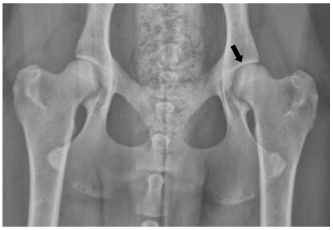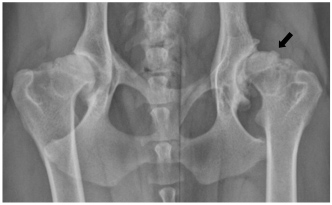The Importance of Exercise for the Growing Kangal Dog
Owners of working livestock guardian dogs usually don't need to be concerned about exercise for
their dogs. Given enough fenceline to patrol each morning and evening, these dogs will give
themselves steady, moderate exercise that will allow their bones and muscles to develop. A
Kangal Dog does not need to run 20 miles a day in order to be in good condition, but they do
need regular, steady exercise in order to be able to spring into fast action if an intruder threatens
their livestock.
New owners of companion Kangal Dogs often ask, "How much exercise does my Kangal puppy
need?" It's a good question. But a better question is, "How much and what kind of exercise does
my puppy need?"
In finding the answer for the individual owner, it helps to understand three basic facts.
Firstly, Kangal Dogs were developed for a specific working niche in rural Turkey: to bond to, travel
with, and protect a flock of sheep or goats from predators. Because the main threat to Turkish
livestock is the wolf, Kangal Dogs were developed over the centuries to be very large, big-boned
animals with strong muscles. Like all large breeds, Kangal Dogs mature slowly, and young dogs
are subject to growth spurts--fits and starts in the development of their bones and muscles. Thus
adolescent dogs sometimes go through periods in which their bones, muscles, and ligaments are
growing at somewhat different rates--and what you see is a gangly, rather clumsy "teenager" that
can run like the wind, and yet trip over his own big teenage feet. During these stages, even a
very fit young dog is prone to athletic injuries.
Secondly, in Turkish villages, there are generally no fences for containing a curious Kangal
puppy. From the time they can totter around, Kangal puppies begin to investigate their world. At
first, that world might be the warm moist sheep barn, or a den dug by the bitch under a clump of
trees. After the puppies feel confident moving about their immediate surroundings, they begin to
steadily explore further and further away from the den. They romp and play with one another
over long distances, clamber over stone walls and steep hillsides. Soon, they are accompanying
their mother on her patrols around the house and then perhaps around the village. Depending
on the time of year and the grazing schedule of the family's sheep, the pups may begin
accompanying the sheep and adult dogs further and further out from their home. And all along
the way, they explore and patrol, expanding their boundaries and moving along at a steady trot
over greater and greater distances.
Thirdly, Kangal Dogs in Turkey are generally fed a diet that is rather low in nutrients and calories.
They eat mostly barley mash, with the addition of table scraps, bones, stale bread, and maybe
some occasional yoghurt, eggs or cheese. They get very little meat, and then only sporadically.
Because their diet is low in protein, and especially in calories, they grow slowly, and on the whole
do not get as large as Kangal Dogs in North America. Obese Kangal Dogs are just not to be
found in Sivas province.
Now, compare this to the lifestyle of the average companion Kangal Dog. Most of them live
indoors, and enjoy a close relationship with their human family. Most breeders consider a fenced
yard as a prerequisite, so it is likely that the dog will also spend a fair amount of time in the
yard--which is typically too small for the dog to actually "patrol" or to run in. Three strides and the
Kangal Dog hits the fence in the average yard. In such a yard, a Kangal Dog will not truly
exercise itself, although if there is another dog to play with they will be getting at least some
exercise that way, especially in puppyhood.
Kangal Dogs can thrive in an urban or suburban setting, but the growing Kangal puppy needs
plenty of exercise in the form of walks and slow jogs with their humans, on lead, and preferably
on a natural surface if moving faster than a walk. It is important to increase the amount of
exercise slowly, and not to push a growing puppy too hard. Large, big-boned dogs grow more
slowly, and have a longer period during which their bones are growing and their joints are
relatively elastic.
According to one orthopedic vet that I spoke to, the "weekend warrior" syndrome is a concern,
because growing pups who basically lay around all week long with only short potty walks will not
be in prime condition for a 3-hour hike on the weekend, or a wild romp in the dog park. During
those growth spurts, when growing parts can be slightly out of synch, all it takes is one twist of
the foot or knee, and you can have an athletic injury. This can happen even to young dogs that
are kept in good condition, but the risk is correspondingly higher if the dog does not have
adequately developed muscles and ligaments to hold those heavy, growing bones in place. To
add insult to injury, Kangal Dogs will often limp on an injured limb for a while and then appear to
be fine, or to show only intermittent lameness--but not when they're running and having a blast!
So the owner may not even be aware that the pup is truly injured. Without proper R&R, the next
romp in the park or leap down the steps can turn a sprained ligament into a torn one, potentially
requiring surgery and a long recovery period.
Thus, during those critical growth period up to perhaps 18 months of age, it is important to keep
a Kangal pup in solid condition without overdoing it. Dogs that haven't been exercised for a while
should be brought gradually back into condition, and in the meantime should never be allowed
to run at top speed off-leash, or to dash up and down steps, or to run across a slippery floor.
Breeders can do their part by conducting health tests on breeding stock and puppies, and
gradually selecting for stronger and tighter joints. This delicate balancing act will mean breeding
dogs that are adapted for a more varied lifestyle than that which they experience in Turkey, while
still maintaining the size, strength, conformation and temperament that is appropriate for our
historic breed.
Finally, while monitoring exercise and soundness, the owner should also ensure that the growing
dog gets good nutrition, but does not overfeed or use high-calorie, carbohydrate based
commercial foods. A quality kibble for large breeds, fed in modest amounts to keep the dog slim,
will help ensure that the young dog grows slowly to its full potential and in glowing health.
The above excerpt is from KDCOA



